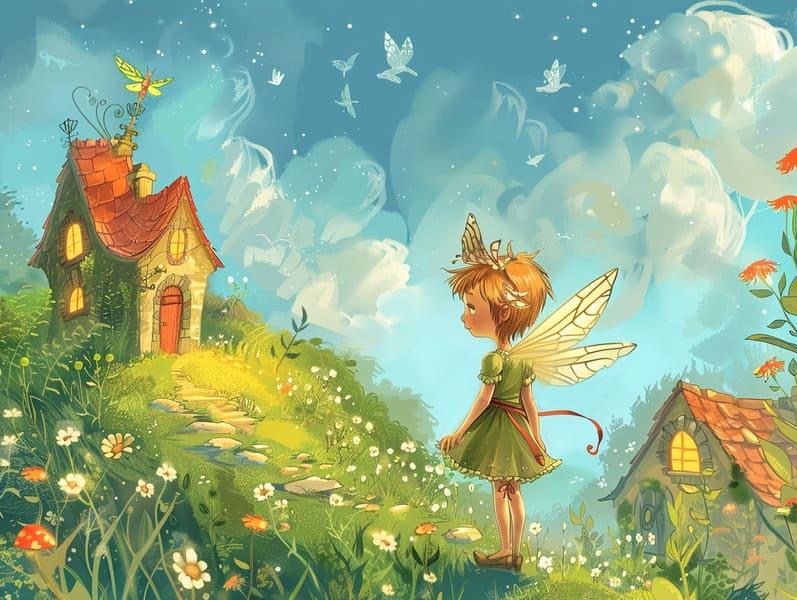The Origins of Ancient Fairy Tales and Its Endless Attraction.
The Origins of Ancient Fairy Tales and Its Endless Attraction.
Blog Article

Classic fairy tales have old origins. These stories have been narrated from one generation to the next well before they were ever put on paper. They arose from a variety of societies, including Eastern traditions. They were initially narrated among elders, often carrying themes and messages concerning the societal norms and beliefs of the time.
Jacob and Wilhelm Grimm, Jacob and Wilhelm Grimm, were among the first to collect many of these beloved tales. Their anthology, "Grimm's Fairy Tales," included stories like "Ashenputtel," "Hansel and Gretel," and "Snow White," which have since become mainstays in the world of timeless fairy tales. Similarly, Hans Christian Andersen's enchanting stories, such as "The Mermaid," and "The Ugly Duckling," have touched hearts worldwide, establishing their place in the pantheon of treasured fairy tales.
Though they are centuries old, these stories remain as pertinent as ever, especially as children's bedtime stories. These delightful tales are now available in numerous formats, including gorgeously illustrated books, enchanting animations, and online storybooks.
Their lasting appeal can be traced to several charming aspects:
Crucial Morals: Old fairy tales often illustrate important moral lessons. Fairy tales like "The Boy Who Cried Wolf" teach the importance of sincerity, while "The Hare and the Tortoise" emphasize the virtues of determination and meekness. These narratives offer the young clear distinctions between virtue and vice, guiding their moral compass in a gentle yet deep way.
Compassion and Insight: Classic fairy tales frequently involve beings facing struggles and tests, inciting audiences to empathize with their struggles and cheer for their triumphs. For instance, "The Story of Beauty and the Beast" highlights the necessity of appreciating inner worth to acknowledge the true nature of a character, cultivating sympathy and awareness.
Cultural Recognition: Many ancient fairy tales are steeped in the cultural contexts from which they were born. Engaging with these narratives can provide informative snapshots into different social structures, developing a sense of cultural insight and recognition.
Imagination and Innovation: The enchanted elements in traditional fairy tales—magical kingdoms—unleash children’s visions. These tales bring readers to magical realms, kindling imaginative ideas and a sense of fascination that endures a lifetime.
Classic fairy tales are not only whimsical but also enlightening. They work as enchanted tools in developing various mind and heart abilities in children. When traditional fairy tales are voiced, they boost communication skills by offering new words and sophisticated sentence structures. This practice also cultivates auditory perception and attention, as children keep up with the story, eager to see what happens next.
Furthermore, conversing about the themes and characters of ancient fairy tales can cultivate analytical skills and evaluative skills. Young ones are educated to pinpoint patterns, forecast, and grasp cause and effect. These examinations also promote kids express their thoughts and feelings, enhancing their emotional intelligence.
In today’s cyber age, the presence of web-based fairy tales has made these stories more obtainable than ever. Digital sites and software share large libraries of bedtime fairy tales that can be enjoyed or listened via anytime, anywhere. Fairy tales narrated are particularly favored, giving an fascinating method for little ones to be a part of these fascinating tales. Sound books and voiced videos bring characters and settings to life, often augmented by charming melodies and tunes that heighten the storytelling experience.
The lasting appeal of traditional fairy tales lies in their ability to evolve to new eras while sustaining their basic principles. Contemporary renditions of these tales often show more different figures and modern settings, making them pertinent to today’s audience. However, the core values of courage, understanding, and fair-mindedness remain unchanged, continuing to connect with kids of all ages.
Old fairy tales also offer a sense of familiarity and understanding. They bestow a ordered narrative with a plain beginning, middle, and end, often ending with the termination read more of conflicts and the triumph of virtue over vice. This uniformity can be reassuring for young readers, sharing a sense of solidity in an inconstant world.
Classic fairy tales continue to spellbind and teach new generations, maintaining their fascination and applicability in modern society. As children's night stories, they extend a perfect blend of charm and understanding, developing moral values, empathy, and creativity. The availability of free fairy tales online and the commonness of fairy tales read aloud warrant that these old narratives remain attainable to new generations.
By retaining and broadcasting these narratives, we continue to glorify the rich tapestry of fantasy and cultural heritage. Whether you are delving into a richly illustrated book, accessing a web-based collection, or listening to an narrated book, the captivation of traditional fairy tales is always within reach. These stories point out of the timeless nature of fairy tales and its ability to bind us across time and space.
No matter if you are enjoying a vividly illustrated book, viewing a internet collection, or listening to an read-aloud book, the loveliness of timeless fairy tales is always within reach.
These fairy tales show us of the lasting force of fairy tales and its ability to gather us across generations and cultures, casting a charm that fascinates and enlightens alike.